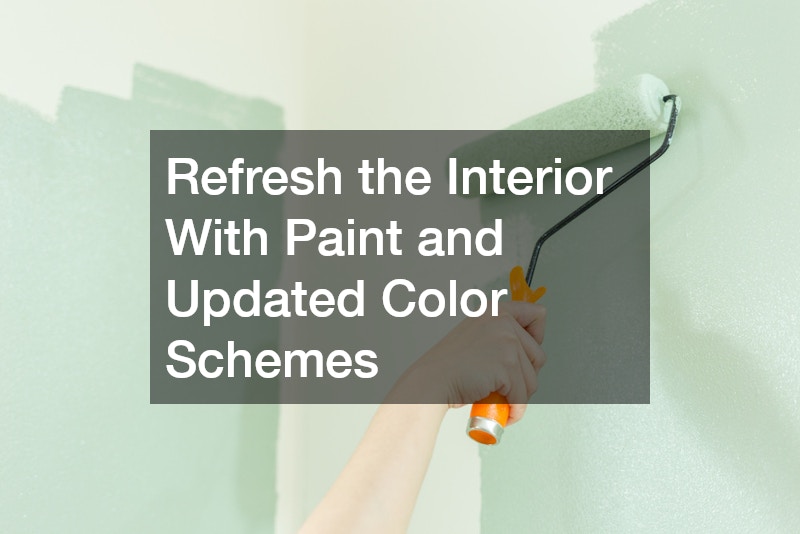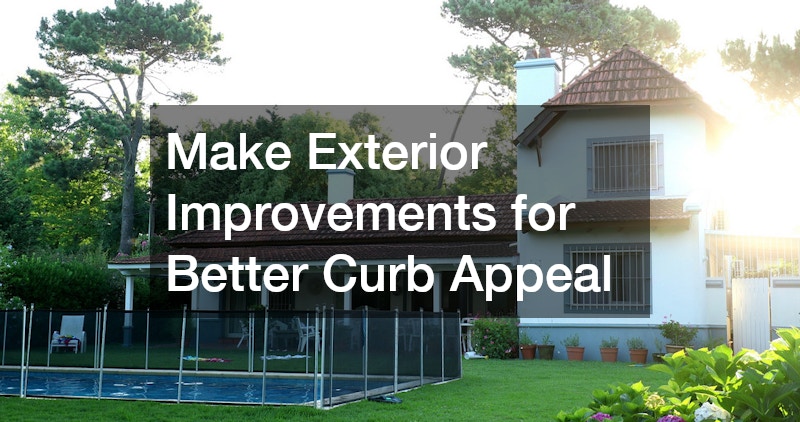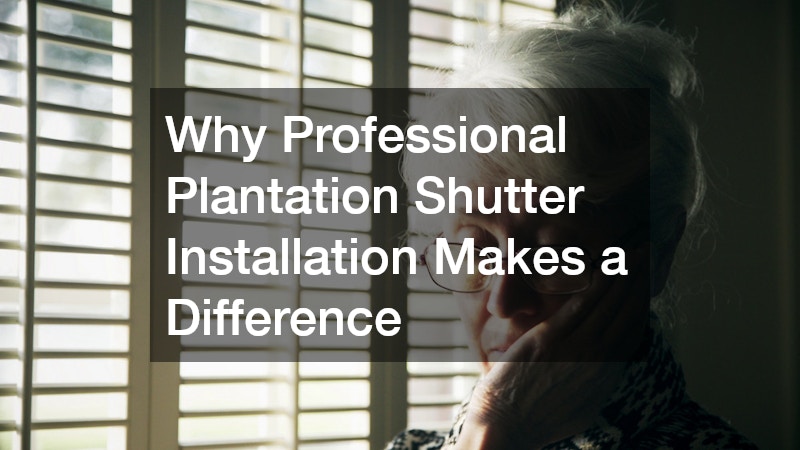Updating an older home can be one of the most rewarding projects you take on as a homeowner. Older houses usually come with character—unique layouts, architectural charm, and sentimental value that newer homes can’t quite replicate. However, they often need updates to improve comfort, functionality, energy efficiency, and modern appeal. Many homeowners worry that upgrading an older home means massive renovation costs, but the truth is that you can make meaningful improvements without breaking your budget.
Affordable upgrades often have the biggest impact. Simple changes such as refreshing paint, updating lighting, improving storage, or reworking outdated layouts can dramatically shift the look and feel of your home. You don’t always need full-scale remodeling to achieve major visual and functional improvements. The key is planning, choosing strategic upgrades, and balancing DIY projects with professional help where needed.
This comprehensive guide explores a wide range of affordable ways to enhance an older home—from interior improvements to exterior updates, energy-saving solutions, and small design changes. With thoughtful planning, you can preserve your home’s historic charm while giving it the modern upgrades you’ve always wanted.

Refresh the Interior With Paint and Updated Color Schemes
Painting is one of the most cost-effective ways to transform an older home. Fresh paint can instantly brighten rooms, cover decades of wear, and create cohesion throughout your living spaces. Older homes often have darker colors, outdated wallpaper, or inconsistent paint tones from previous owners. A new color palette brings harmony and a more modern feel.
Neutral colors like warm whites, beiges, greys, and soft pastels make rooms appear larger and more open. Accent walls can add personality without overwhelming the space. If your home features beautiful trim or molding, painting it a contrasting color helps draw attention to its craftsmanship.
For homes that still have wallpaper, partial removal combined with wainscoting or board-and-batten trim offers an affordable compromise. This allows you to preserve some of the traditional aesthetic while updating the space for modern tastes.
Don’t forget ceilings—fresh white paint can brighten rooms significantly, especially if your home has older lighting fixtures or low natural light levels.
Improve Lighting for Modern Appeal and Better Functionality
Older homes tend to rely on limited overhead lighting and outdated fixtures. Dim, warm bulbs and limited lighting placement can make rooms appear smaller and outdated. Fortunately, lighting upgrades are budget-friendly and highly effective.
Start by replacing old bulbs with LED options, which provide brighter, more efficient lighting and reduce energy costs. You can choose warm or cool tones based on your style preferences. LED bulbs also last far longer than traditional ones, reducing long-term replacement costs.
Next, consider upgrading fixtures. Modern ceiling lights, chandeliers, sconces, or flush-mount designs can be installed without major remodeling. Swapping out yellowed or outdated glass shades with clear or frosted options improves brightness immediately.
Floor lamps and table lamps are also excellent ways to enhance lighting without altering the electrical system. Adding light sources at different heights creates depth and makes rooms feel more inviting.
Smart lighting systems are more affordable than ever and allow you to control brightness and color temperature from your phone or voice assistant. These systems add convenience and modern functionality, even in older structures.

Upgrade Key Rooms Without Full Renovations
Full remodels can be expensive, but targeted improvements offer comparable visual impact. Kitchens and bathrooms often show their age the fastest, yet they also provide the greatest return on investment. The right updates can give these areas a refreshed look for a fraction of the cost of a full renovation.
Many homeowners begin updates by upgrading storage and replacing outdated fixtures. Installing modern faucets, swapping out cabinet hardware, or replacing aging sinks can make older rooms instantly look more modern. These small touches add style without requiring major construction.
If you’re updating your bathroom, targeted improvements can pair naturally with bathroom renovations when larger updates are needed later. Even without redoing plumbing or tile, simple cosmetic upgrades can dramatically enhance comfort and appearance.
For kitchens, upgrading countertops, modernizing lighting, and improving layout efficiency help create a more functional space. Some homeowners replace only visible cabinet fronts instead of the full structure to reduce costs while still gaining a refreshed appearance.
Strategic updates offer a balanced way to modernize your home while spreading out larger investments over time.
Replace Dated Cabinets and Add Functional Storage
Cabinetry plays a major role in both kitchen and bathroom design. Over time, cabinets can become worn, stained, or stylistically outdated. Fortunately, you don’t always need brand-new installations to achieve a modern look.
Refacing—the process of replacing only cabinet doors and drawers—provides significant savings while still transforming the appearance. Repainting existing cabinets is another budget-friendly option that works especially well in older homes with solid wood cabinetry. Modern handles, knobs, and pulls are inexpensive but make a noticeable difference.
Some homeowners consider options from cabinet companies when looking for partial installations or custom organization systems that help maximize storage. Adding pull-out drawers, spice racks, and dividers dramatically improves functionality.
Beyond the kitchen and bathroom, built-in shelving or floating shelves are stylish and affordable ways to expand storage in living rooms, hallways, offices, and bedrooms. Storage upgrades help older homes feel more organized and modern without costly structural changes.

Upgrade Counters for Long-Term Value
Countertops significantly influence a room’s appearance. Even if you’re not planning a full kitchen renovation, upgrading aging counters is a cost-effective way to modernize the space.
Laminate counters offer affordability, but if your budget allows, investing in granite countertops adds both elegance and durability. Granite lasts for decades, resists scratches and heat, and adds resale value. Many homeowners choose to upgrade only the most visible areas—such as kitchen islands or main counters—while keeping secondary surfaces more budget-friendly.
Another option is butcher block, which brings warmth and character. It pairs beautifully with older homes that feature natural materials and wood tones. Composite and quartz options have also become more affordable and require minimal maintenance.
Mixing materials can be surprisingly stylish—combining stone, wood, and laminate in different areas helps you achieve a high-end appearance without the cost of a full luxury remodel.
Update Flooring for a Fresh, Modern Look
Flooring is one of the first elements people notice when entering an older home. Worn carpet, scratched linoleum, or faded hardwood can date your home more than any other feature. Fortunately, flooring upgrades vary widely in cost, allowing you to choose an option that fits both your style and budget.
Laminate flooring is a popular budget-friendly option that mimics hardwood without the high cost. Vinyl plank flooring has grown in popularity due to its durability, water resistance, and realistic textures. Many older homes have hardwood hiding beneath old carpet—refinishing can restore its beauty at a reasonable cost.
If you’re unsure where to begin, consulting local flooring companies can help you find options tailored to your home’s condition and layout. Their expertise helps ensure you pick materials that work well with older construction.
Rugs are another simple upgrade that adds comfort and style without replacing the existing surface. Layering rugs in living rooms, bedrooms, and hallways helps cover imperfections while boosting warmth.
Upgraded flooring helps unify your home and creates a cleaner, more modern appearance.

Make Exterior Improvements for Better Curb Appeal
Your home’s exterior sets the tone before anyone even steps inside. Older homes often show age through faded paint, worn trim, unmaintained landscaping, or outdated design features. Luckily, improving curb appeal doesn’t have to be expensive.
Start by refreshing exterior paint or power-washing siding. These simple steps can dramatically brighten the home’s façade. New house numbers, updated porch lighting, fresh mulch, and trimmed shrubs all contribute to a clean, inviting appearance.
For homes with aging or damaged siding, consider exploring a siding replacement service to improve insulation, protect against the elements, and modernize the look. Updating only the front-facing sections can keep costs lower while still creating noticeable impact.
If your home has an outdated or damaged roof, minor repairs or updates can significantly improve curb appeal. Homeowners planning upgrades sometimes consult a roofing company to explore cost-effective solutions that extend roof life without a complete replacement.
Exterior improvements help preserve structural integrity while adding charm and value to your property.
Improve Safety and Security Around the Property
Older homes often have outdated safety features. Improving safety doesn’t require a large budget; even small updates help protect your family and preserve your investment.
Modern smoke detectors, carbon monoxide alarms, and updated electrical outlets can make a big difference. Install motion-sensor lighting near walkways and entrances to improve visibility.
If your home has an older fence that is sagging or unstable, consider contacting a local fence company for repairs or partial replacement. A sturdy fence enhances safety, privacy, and curb appeal.
Replacing old locks with smart deadbolts, adding security cameras, or installing a video doorbell are affordable security upgrades that integrate well with older homes. These features deter intruders and offer peace of mind, especially for homes with older windows or multiple entry points.
These safety improvements are essential for modern living while preserving the home’s original charm.
Modernize the Exterior’s Functionality
Exterior functionality matters just as much as appearance. Older homes often lack proper drainage, insulation, and structural protection. Affordable updates help prevent long-term damage and improve energy efficiency.
If your property has trees that threaten the home’s foundation or roof, consider coordinating a tree removal service to prevent costly damage. Removing troublesome trees also improves sunlight exposure and enhances your landscaping.
Upgrading your garage entrance can instantly modernize the exterior. Many homeowners enhance functionality by scheduling garage door services to repair aging doors, improve insulation, or install modern automatic features.
If you’re considering improvements to roof structure or shingles, exploring custom roofing solutions provides both aesthetic and practical benefits. Some homeowners choose modern materials that replicate historic styles but offer greater durability.
These small but important upgrades strengthen your home’s exterior structure and prevent costly issues.
Enhance Outdoor Living Spaces
Outdoor areas add valuable square footage, especially in older homes with limited interior space. You don’t need a major renovation to create functional outdoor living spaces.
Start with simple additions such as patio furniture, string lights, or a fire pit. These upgrades are affordable and create cozy gathering areas.
Improving landscaping can also make your yard more enjoyable. Planting perennials, adding stone pathways, or installing raised garden beds boosts aesthetics and encourages outdoor use.
Homeowners planning larger outdoor improvements sometimes consider future projects that may involve decks, pergolas, or outdoor cooking areas. These long-term upgrades may eventually involve a professional, but starting small keeps the project affordable while helping you plan for the future.
Outdoor enhancements create enjoyable spaces without requiring major construction.
Upgrade Windows and Doors for Better Efficiency
Older windows and doors are often drafty, difficult to open, or lacking proper seals. Improving these areas can significantly reduce your energy bills and enhance comfort year-round.
If full replacement isn’t in your budget, consider more affordable solutions:
- Add weather stripping
- Apply window insulation film
- Install thermal curtains
- Add door sweeps
- Seal gaps with caulk
These low-cost updates reduce drafts and improve overall efficiency.
If you eventually plan to upgrade windows entirely, consider budgeting for energy-efficient models. Replacing even a few problem windows each year helps spread out the cost while producing immediate benefits.
Older homes often benefit from storm doors and attic insulation as well—small additions that greatly improve interior temperature control.
Improve Plumbing and Utility Functionality
Older homes often come with outdated plumbing, which can cause low water pressure, rust stains, leaking pipes, or inefficient fixtures. You don’t need to replace the entire system to see improvements.
Start by upgrading faucets, showerheads, and toilets to more modern, water-efficient models. These small changes improve water flow and reduce utility costs. If your drains run slowly, coordinating a cleaning service or maintenance appointment helps extend the life of your plumbing.
Updating plumbing fixtures and performing maintenance prevents larger issues such as leaks, corrosion, or water damage. These upgrades help preserve structural elements that could be compromised by undetected moisture issues.
Affordable plumbing updates are essential for improving daily comfort without the cost of major renovations.
Enhance Electrical Systems for Safety and Convenience
Older homes often have outdated electrical systems that may not support modern appliances, lighting, or electronics. While full rewiring can be costly, smaller upgrades offer significant benefits.
Replacing old outlets with modern ones—especially adding grounded outlets or GFCI protection—improves safety. Upgrading your electrical panel can also be done affordably, especially when handled by a professional.
Integrating smart home features is easier than ever, even in older houses. Smart plugs, smart switches, and home hubs work with existing wiring and let you automate lighting, climate control, and security features.
If extensive electrical work is needed, coordinating with a local electrician ensures safe upgrades that meet modern code requirements.
Well-planned electrical updates blend convenience with long-term safety.
Address Roofwear and Moisture Concerns
Older homes are particularly vulnerable to roof leaks, moisture buildup, and structural issues caused by aging materials. Even if you don’t plan to replace your roof, affordable upkeep helps extend its lifespan.
Start by repairing loose shingles, clearing gutters, and inspecting roof valleys. Preventative maintenance is far more affordable than replacing damaged ceilings or structural components.
If your roof shows signs of aging or weather damage, consulting a roofing company can help you evaluate your options. Many provide budget-friendly repairs or partial replacements that prevent major deterioration.
Moisture problems extend beyond the roof. Older basements may require sealing, waterproofing, or improved ventilation. Monitoring humidity levels helps prevent mold and protects the structure.
These small moisture-control steps protect your home from expensive future repairs.
Give the Interior a Design Refresh
Design updates offer an affordable way to give your older home new life. Small changes can dramatically shift atmosphere and style.
Consider adding:
- Stylish area rugs
- Updated curtains or blinds
- New throw pillows
- Decorative mirrors to brighten rooms
- Framed artwork or family photos
- Plants for natural warmth
These finishing touches enhance older homes without requiring major renovation.
Furniture placement also affects how a room feels. Rearranging layout or adding multipurpose furniture can update your home’s functionality instantly.
Upgrading an older home doesn’t have to involve costly renovations or complete overhauls. With strategic planning and thoughtful budgeting, you can bring new life to your home through affordable improvements that enhance comfort, beauty, functionality, and value. Whether you focus on small cosmetic updates, energy-efficient upgrades, safety improvements, or targeted repairs, each step contributes to a more enjoyable living environment. Older homes have a charm worth preserving—and with the right upgrades, they can offer the perfect blend of history, character, and modern convenience.










